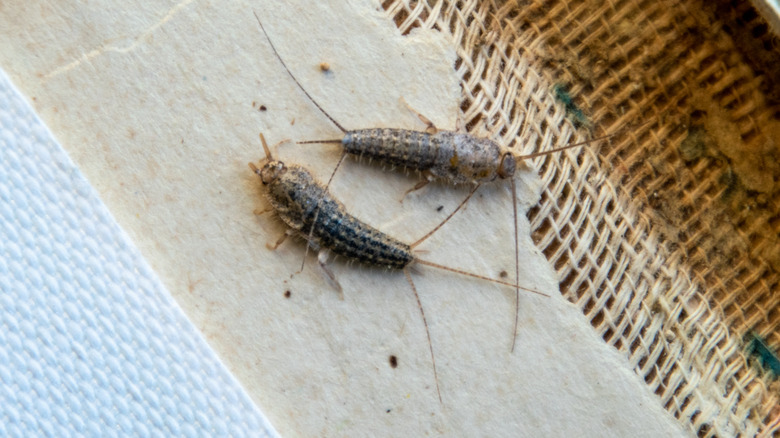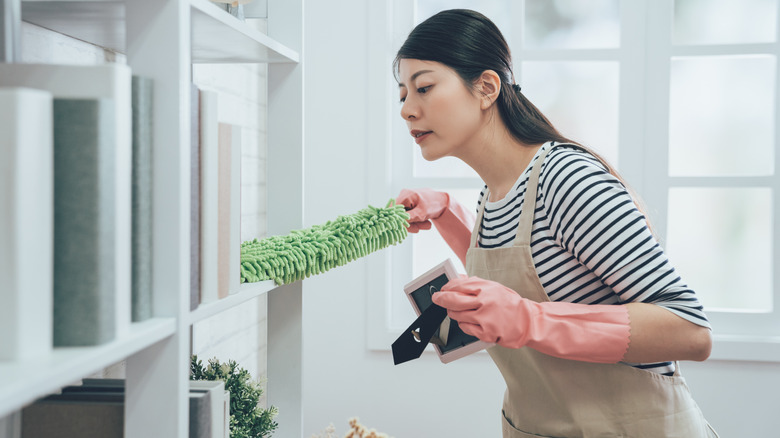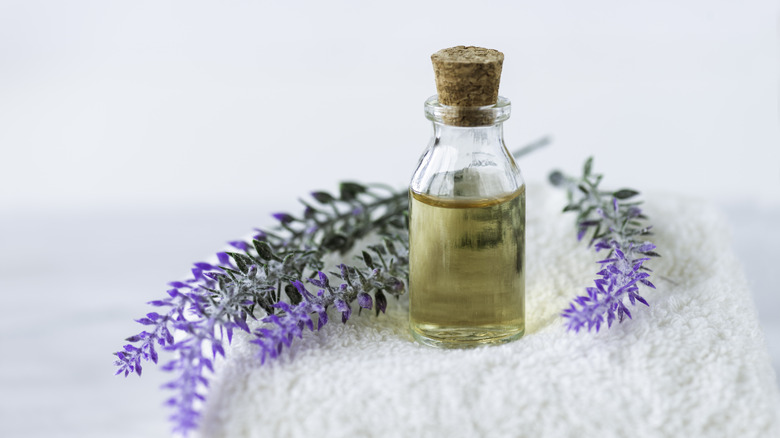Silverfish Don't Stand A Chance Against One Floral Scent
If you're dealing with silverfish then lavender might just be your new best friend — this aromatic plant is a powerful deterrent against various critters, due to the strength of its primary compound, linalool. Linalool is a terpene alcohol found in various plants and flowers, and it's well-regarded for its delightful floral aroma. But it's not just about the fragrance. This compound takes action against the nervous systems of insects, rendering your living spaces uninhabitable for them. The power of linalool extends beyond just tackling silverfish — it also deters mosquitoes, ants, and ticks. What you're getting here is a wide-reaching shield against various household irritants.
The science backs this up. Numerous studies identify linalool as a significant ingredient in natural biopesticides. It is a responsible alternative to traditional chemical pesticides, which often harm the environment. In our era of heightened environmental consciousness, the eco-friendly benefits of lavender have become ever more critical. Linalyl acetate is another potent compound in lavender that further elevates linalool's efficacy. The chemicals linalool and linalyl acetate work together, making lavender effective at keeping silverfish and other invasive pests away.
What are silverfish, and why do they enter your home?
If you've noticed silverfish in your home, it's crucial to understand what you're dealing with before taking action. Their distinct teardrop-shaped bodies and silver-grey scales often identify these nocturnal insects. They have long antennae and move in a fish-like manner, which is how they got their name. While their appearance is unsettling for many, what they signify can be even more disturbing. Silverfish are notorious for their love of damp, dark spaces. You'll often find them where you least want them: bathrooms, basements, attics, and even on your beloved bookshelves. Why? They're hunting for their next meal, ranging from starchy foods to glue in books, cardboard, and even your favorite wool sweater. In short, these insects aren't picky eaters. They're opportunistic, taking advantage of whatever your home has to offer.
Though they don't pose a direct health threat, their presence indicates a larger problem. Excess moisture is a major attractant for these pests, and where there's moisture, mold, and mildew aren't far behind. This can quickly escalate into more serious issues, such as structural damage to your home and potential health concerns for those living there. Moreover, silverfish are rarely solo adventurers. Their presence could signal that your home hosts other, more dangerous pests. Luckily, you can incorporate it into your daily cleaning routine or simply enjoy its calming fragrance through various methods like diffusers or potpourri.
DIY lavender insect repellent: how to make and use
To whip up a basic bug repellent, all you need is a spray bottle, some water, and, of course, lavender essential oil. Simply add 10–15 drops of the lavender essential oil to a cup of water in the spray bottle. Give it a good shake, and just like that, your homemade repellent is ready to go. But if you aim to formulate something with an extra kick, adding citrus elements like lemon synergizes impressively with lavender's inherent insecticidal properties and heightens the efficacy of the repellent. Add three tablespoons of lemon juice to your lavender mixture in a lemon-lavender blend.
When it comes to application, you've got options. You can spritz the mixture directly onto surfaces where you've spotted silverfish or soak cotton wool balls in the liquid and strategically place them in areas of frequent silverfish activity. Just shake the bottle before each use to keep the oils evenly distributed throughout the liquid. If you prefer a less hands-on approach, you can use lavender sachets — fill small fabric pouches with dried lavender and position them in your drawers, closets, or other silverfish-prone zones. It provides a long-term solution for keeping these pests at bay and gives your storage spaces a delightful, lasting aroma.


